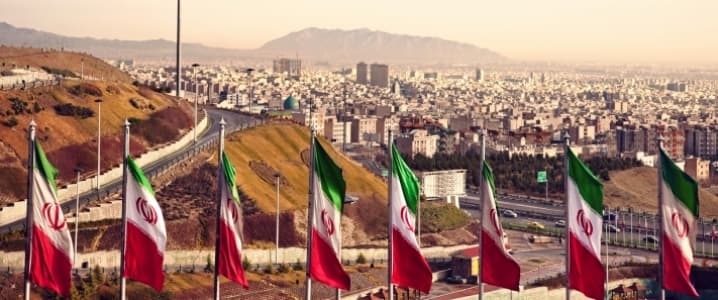In Iran, as it is in many Persian Gulf states, oil is the sole economic backbone. It provides federal revenues for basic goods and services and employs large swaths of the population. A recent round of protests has industry analysts concerned that violence will roll over onto prized oilfields, but the government has largely preempted this scenario.
Iran’s Revolutionary Guard officially put an end to over a week of deadly protests in the country on Sunday, the government said, though social media apps continue to be banned in the nation, which demands accountability from Tehran for limited economic growth one year after the lifting of economic sanctions.
President Hassan Rouhani, the moderate in power despite the chagrin of the country’s conservative religious leadership, believes the protests were spurned by his orthodox political opponents who sought to deny Rouhani any progress on personal liberties on the domestic front. Projecting an image of an unstable Iran abroad would also further the conservatives’ agenda by spooking investors that the government is trying to court, the president recently said, according to a Channel News Asia report.
To be fair, blocking access to social media to squelch unrest doesn’t really sound like an administration ready to progress personal liberties. Still, there are some indications that hardliners had stoked discontent against the current regime in politically charged speeches. Rouhani is particularly vulnerable to attacks on his economic record since he brokered the nuclear deal that released Iran from U.N. sanctions and has promised new jobs for the youth in his latest campaign for the presidency. New income from a strong oil sector should provide the funding to make those promises a reality, depending on allocation plans.
Unlike the 2009 Green Revolution, these demonstrations do not contest the results of an election or the legitimacy of a regime. But like those protests, the government urgency to keep any drama from prized oilfields is strong. The Revolutionary Guard is habitually summoned to Khorasan and other oil-producing regions to protect facilities from production interruptions.
This strategy only works if discontent does not spread uncontrollably. Before Ayatollah Khomeini ousted the Shah in 1979, oilfield workers upped the economic pressure by refusing to give the Shah-controlled military access to the nation’s oil. Eventually exports lowered to zero, limiting the government’s resources. Related: Soaring Indian Oil Demand Grabs OPEC’s Attention
This time around, Tehran has done a good job so far of shielding its assets, which is why Brent prices, the international barrel benchmark, has not shot up since the unrest initially developed. The population is demanding the allocation of more resources to economic causes, so attacking the nation’s economic engine would be counterintuitive. Shutting down the oil sector only makes sense if the demonstrators have a full-scale revolution in mind—which doesn’t seem to be the case.
As the battle for Iran’s soul between the conservative clergy and the young generation rages on, public clashes like the ones the international community witnessed over the past 10 days are to be expected. The electorate continues to support moderates in the executive and legislative branches, indicating that the next Ayatollah—who will be appointed to his position by the elected body called the Assembly of Experts—is on track to be a liberal pick. The direction of the Islamic Republic, which was founded as a protest against Western powers and secular government, is now leaning forward. Naturally, this makes the religious leadership nervous.
The economics of oil unites the country, however. The fossil fuel keeps the lights on, the bills paid, and the people employed. Political forces from any point in Iran’s political spectrum can agree on that logic, ensuring the security of oilfields even in the most precarious climates.
By Zainab Calcuttawala for Oilprice.com
More Top Reads From Oilprice.com:
- Bioplastics Threaten Big Oil
- Heroes, Gods And Genghis Khan: Naming An Oilfield
- Trump’s Offshore Plan Unlikely To Spark Drilling Rush


















